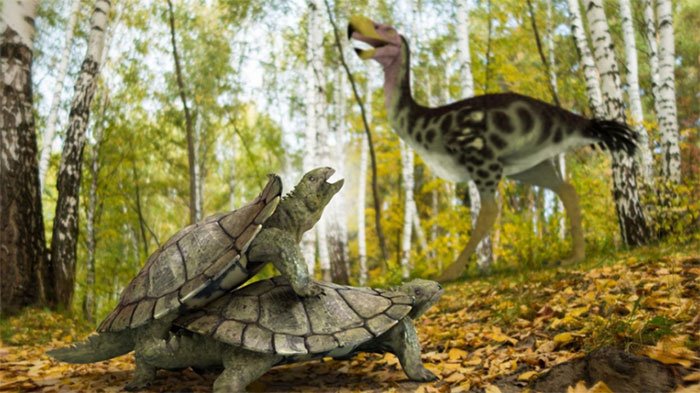Discover the 'bizarre' life form of ancient land turtles
Asteroids thought to have wiped out dinosaurs 65 million years ago also left nearly 75% of all species on our planet extinct.
However, a new study shows a "bizarre" life form that still finds a way to survive, an ancient land turtle.
Fossils of soil tortoises called Laurasichersis relicta , have recently been discovered in northern France. The fossil dates back to 56 million years ago, 10 million years after the asteroid hit Earth on the Yucatan Peninsula in Mexico.

Pictures of exotic turtles are simulated.
Asteroids may also have acidified oceans on Earth, according to a study published in October 2019.
At that time, it was unclear why or how L. relicta survived the impact explosion, paleontological researcher Adán Pérez García said.
"The reason why Laurasichersis survived the great extinction, while no primitive turtles in North America, Europe or Asia can do that. It's still a mystery , " said Pérez. García said.
All turtles were descendants of two branches 160 million years ago, but almost all of the first groups of turtles became extinct after the asteroid impact.
The ancient tortoise was described as peculiar due to some of its oddities compared to modern turtles. It has a crust that only reaches over 58cm in adulthood but can't retract its head.
"This physical limit allows it to develop other protective mechanisms such as large, interconnected armor, which are hard structures on the neck, legs and tail," the researchers added.
The tortoise is unique because its shell is made up of a larger number than what is seen in most tortoises, Pérez García said.
This is the last representative of a previously defined group in China and Mongolia, known from the Jurassic, more than 100 million years before the arrival of the new European Laurasichersis. The group of turtles came to this continent very quickly after the end of the Mesozoic era about 66 million years ago.
- Discover the world's oldest turtle fossil
- Malignant bone cancer was discovered in the Triassic turtles
- Tooth turtles can last more than 100 million years ago
- The most exotic turtles in the world
- Ancient Egyptians died ... still beautiful
- The bizarre appearance of snake neck turtles
- Why do sea turtles dive underwater?
- Revealing the strange sex life of the extremely rare turtle
- Detected a half-ton turtle when repairing graves
- Discovered a bizarre life, eating poisonous gas in a flooded cave in Mexico
- Discover the land used to have bizarre creatures living
- The world's most bizarre discovery: Self-luminous sea turtles
- Turtles 'trick' the whole village of science
- Discover the new giant turtle on Galapagos island
 Discovered an ancient centipede fossil 99 million years old
Discovered an ancient centipede fossil 99 million years old Discovered bat-like dinosaurs in China
Discovered bat-like dinosaurs in China Discovered a 200-year-old bronze cannon of the coast
Discovered a 200-year-old bronze cannon of the coast Discover 305 million-year-old spider fossils
Discover 305 million-year-old spider fossils